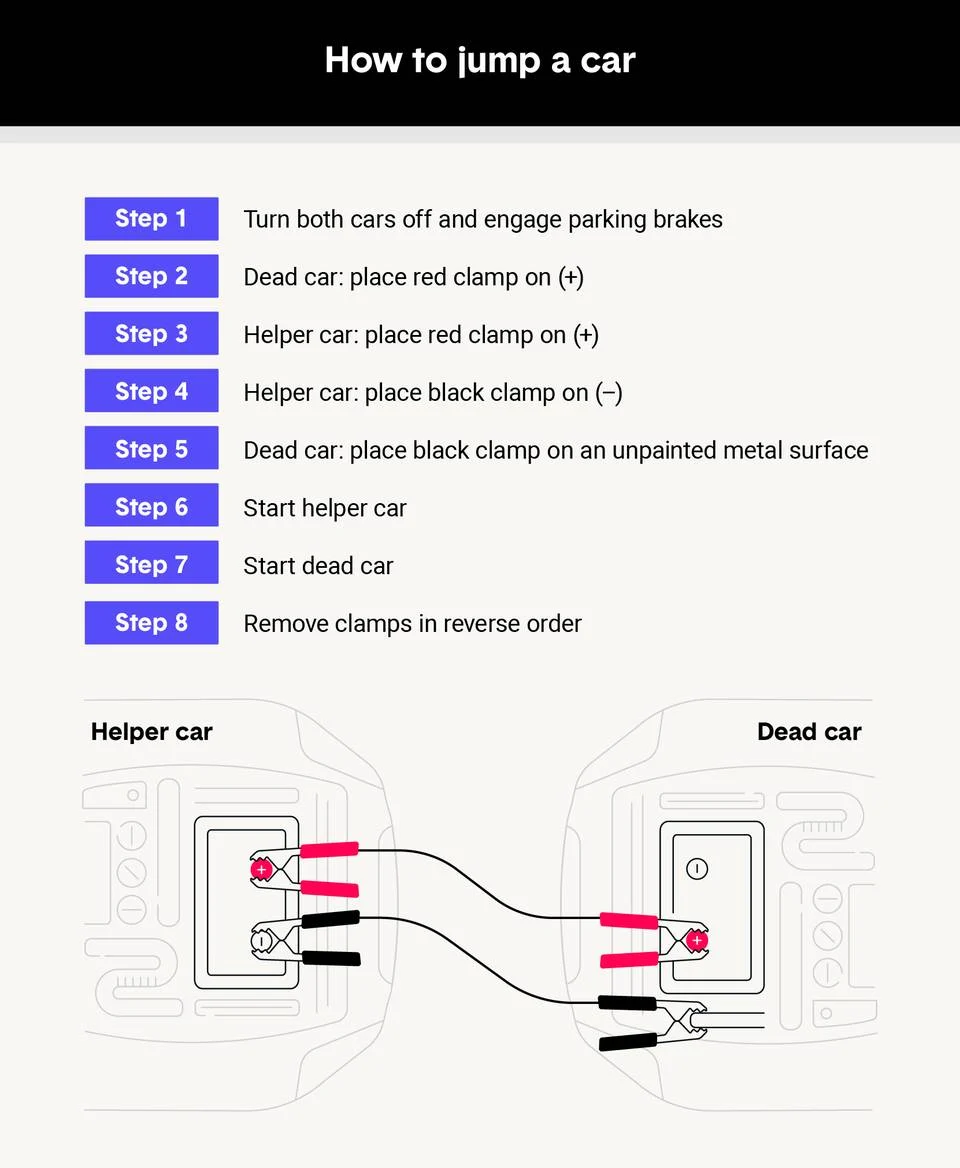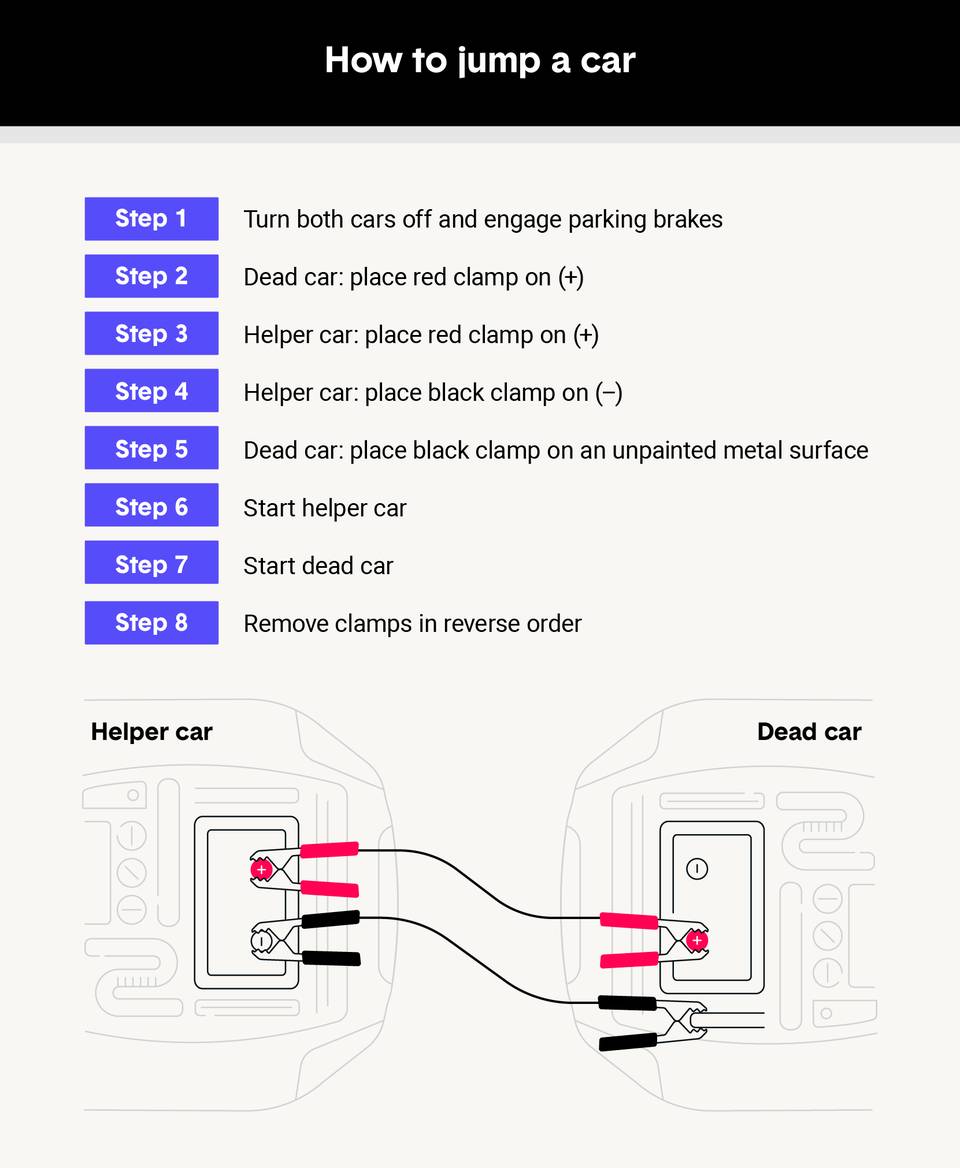Essentials For Your Winter Emergency Kit
Early winter weather predictions call for warmer-than-average temperatures for most of the United States, but wetter conditions in the North. While snow sets the scene for a beautiful winter wonderland, it doesn’t make for fun driving conditions. Sleet and snow can reduce visibility and make it more difficult to control your vehicle on icy roadways. In fact, 17% of car accidents occur during winter weather conditions.
Low visibility, impassable roads, and extremely cold temperatures may even leave you stranded roadside in winter weather. Try to avoid driving in severe winter weather if you can, but for when you can’t avoid it, prepare with a winter car emergency kit in case you find yourself stuck. Find out what you should pack in your kit and how to protect yourself and your car this winter season.

Winter car emergency checklist
Items to keep in your car kit during the winter
Your winter emergency kit should include basic survival supplies, safety items, car maintenance tools, and winter clothing. These items will help you stay comfortable and hydrated if you ever get stuck on the side of the road or have to wait out a storm. Gather up your supplies, pack them into a storage bin or large backpack, and place your roadside emergency kit inside your car before venturing out into the cold weather.

1. Flashlight
Nighttime or near-blizzard conditions can decrease visibility to near-zero. A bright flashlight can provide much-needed light to either work on getting back on the road or signal to others for help. It’s smart to keep extra batteries in your emergency survival kit.
2. Bag of cat litter
For those new to winter weather, icy conditions greatly reduce your tire traction. To get your car unstuck, pour non-clumping kitty litter in the path of your tires. Other alternatives include sand or road salt.
3. Snow shovel
If snow starts piling up around your car on the side of the road, you’ll need a shovel to help you clear a path or uncover your car. Keep your car visible to rescue teams by limiting the amount of snow surrounding it or covering your tail lights.
4. First aid kit
A basic first aid kit can come in handy in the event of minor scrapes or pains, but even more so if you’re stranded. If you take daily medications, you should also pack extras away in your kit.
5. Ice scraper
People familiar with winter weather know how vital a windshield scraper is for getting ice and snow off of a windshield. During a deep freeze or emergency situation, you don’t want to waste time — or your car’s battery — waiting to defrost a thick sheet of ice on your windshield.
6. Jumper cables
Speaking of batteries, you’ll need to be able to jumpstart your car if the battery goes dead. While jumping a car is common, it can be dangerous if you don’t do it correctly. Most importantly, reduce the risk of sparking by never touching the clamps end to end and avoid any moisture near the cables.
Print the following instructions to keep in your emergency kit as a reminder:

Early winter weather predictions call for warmer-than-average temperatures for most of the United States, but wetter conditions in the North. While snow sets the scene for a beautiful winter wonderland, it doesn’t make for fun driving conditions. Sleet and snow can reduce visibility and make it more difficult to control your vehicle on icy roadways. In fact, 17% of car accidents occur during winter weather conditions.
Low visibility, impassable roads, and extremely cold temperatures may even leave you stranded roadside in winter weather. Try to avoid driving in severe winter weather if you can, but for when you can’t avoid it, prepare with a winter car emergency kit in case you find yourself stuck. Find out what you should pack in your kit and how to protect yourself and your car this winter season.

Winter car emergency checklist
Items to keep in your car kit during the winter
Your winter emergency kit should include basic survival supplies, safety items, car maintenance tools, and winter clothing. These items will help you stay comfortable and hydrated if you ever get stuck on the side of the road or have to wait out a storm. Gather up your supplies, pack them into a storage bin or large backpack, and place your roadside emergency kit inside your car before venturing out into the cold weather.

1. Flashlight
Nighttime or near-blizzard conditions can decrease visibility to near-zero. A bright flashlight can provide much-needed light to either work on getting back on the road or signal to others for help. It’s smart to keep extra batteries in your emergency survival kit.
2. Bag of cat litter
For those new to winter weather, icy conditions greatly reduce your tire traction. To get your car unstuck, pour non-clumping kitty litter in the path of your tires. Other alternatives include sand or road salt.
3. Snow shovel
If snow starts piling up around your car on the side of the road, you’ll need a shovel to help you clear a path or uncover your car. Keep your car visible to rescue teams by limiting the amount of snow surrounding it or covering your tail lights.
4. First aid kit
A basic first aid kit can come in handy in the event of minor scrapes or pains, but even more so if you’re stranded. If you take daily medications, you should also pack extras away in your kit.
5. Ice scraper
People familiar with winter weather know how vital a windshield scraper is for getting ice and snow off of a windshield. During a deep freeze or emergency situation, you don’t want to waste time — or your car’s battery — waiting to defrost a thick sheet of ice on your windshield.
6. Jumper cables
Speaking of batteries, you’ll need to be able to jumpstart your car if the battery goes dead. While jumping a car is common, it can be dangerous if you don’t do it correctly. Most importantly, reduce the risk of sparking by never touching the clamps end to end and avoid any moisture near the cables.
Print the following instructions to keep in your emergency kit as a reminder:

7. Water
Dehydration is a serious threat when you’re stranded. Keep a large jug of water—preferably glass—in your car for emergencies. Replace the water every few months since it may go through extreme temperature changes inside your car.
8. Blanket
Pack a large, thick blanket away in your car to keep you warm in winter weather or to use as padding in case you need to work on your car. Consider adding a reflective emergency blanket or sleeping bag to your kit too.
9. Cell phone charger
This is essential for most drivers already but it won’t hurt to add an extra charger with a lighter adapter to your kit. Of course, this assumes you have enough gas and battery to keep your car running to get a charge so consider packing a portable phone charger too.
Print out an emergency contact sheet to keep in your car just in case your phone dies and you don’t have access to a charger. You may be able to borrow someone else’s phone to call for help or contact your loved ones to let them know you’re safe.

10. Reflective triangles
Breaking down on the side of the road can put you at risk for passing drivers, especially in low visibility conditions. Put out reflective triangles to make your car more visible and protect from any hazards.
11. Non-perishable snacks
Granola bars, nuts, crackers, dried fruit, and jerky are a few examples of snacks you can keep on hand in case you get stranded. Like the water, you should replace these every few months or sooner so they don’t expire.
12. Matches
Waterproof matches or a lighter can provide some light and warmth in case of emergency. These small items hardly take up any space in your kit too.
13. Toolkit
Similar to the first aid kit, a basic toolkit can be useful year-round in your car. From small repairs to changing a tire, keep these on hand in case you need them.
Other recommended items
For those who like to always be prepared, consider adding a few more items to your winter car emergency kit. Stock up with plenty of winter clothing like a hat, large coat, socks, and gloves to stay warm and dry.
Pack these additional supplies if you have space in your car:
- Extra winter clothes
- Snow boots
- Tire chains
- Duct tape
- Empty gas can
- Tow strap
- Fire extinguisher
- Road flare
- Snow brush
- Traction mats
Car maintenance tips to prepare for winter weather conditions
Just like your emergency kit, your vehicle should be prepped as winter approaches. Don’t wait for the temperature to drop to realize you should have had something repaired. Check off these routine maintenance items before hitting the road and driving in winter weather.

Swap your wiper blades
If your wiper blades are leaving streaks across your windshield, it may be time to replace them. You can purchase special winter wiper blades to battle heavy snow and ice.
Inspect your battery
Temperature drops can wreak havoc on your car battery. You may notice it’s more difficult to start your car in near-freezing temps because it loses cranking power. Either check out your battery’s charge level yourself or go to a local repair shop to have it inspected.
Keep gas in the tank
Being stuck out in a snowstorm with little to no gas is risky. Try to keep at least a half-tank of gas during winter months to avoid running out while you’re on the road. That way you can stay warm and charged up for when it’s safe to hit the road again.
Check your tires
Consider changing your regular tires to snow tires for the winter season. If you keep your regular ones on, check the tread and air pressure to ensure they’re properly inflated and not worn down. Don’t forget to check the spare tire as well!
Test your lights
Lights may dim or fog up over time, which doesn’t help visibility snowy conditions. Check that your turn signals and hazard lights work both in the front and back of your car. If they put out less light than usual, it may be time to clean out or replace the bulbs or wires.
Icy roadways and snowy conditions make driving dangerous even for those used to winter weather. Don’t hit the road unless you have to and for when you do have to go out, prepare with a winter car emergency kit just in case you get stranded out in the snow.
6 Winter driving tips to remember for the next winter storm
Driving is dangerous in the best of times, but snow and ice up the stakes. Don’t let winter driving hacks or lazy habits increase your risk of injury, theft, or getting a ticket. Be cautious and patient and power through ‘til spring!
1. Don’t idle your car first before driving it
The best thing to do to warm your car quickly during cold temperatures is to get in and drive. Most parts of modern engines can’t warm up just by idling.
Why does the idling myth persist? The idea dates back to the 1980s and 90s when carburetors (a formerly essential engine element that is no longer widely used) were the norm. Carburetors did need to be adequately warmed before driving in order to get the right mix of air and fuel into the engine. But now, electronic fuel injection, which relies on sensors to find the right mix of air and fuel, has replaced carburetors and warm-up idling is now irrelevant for both optimal engine performance and passenger cabin comfort. The only thing you’ll do by idling is waste gas and cause more pollution. Revving your engine to warm it up isn’t a good idea either because you risk damaging the engine.
2. Never pour boiling water on the windshield
You could actually break the windshield if you do. Glass cannot go from freezing to high temperatures quickly. If it does, it could shatter. And while you’re at it, don’t pour boiling water anywhere else on your car, either – you could shatter side windows or damage in-door electronic systems. During the winter months especially, if your windshield has even a small crack, have it repaired immediately as windshields are crucial to vehicle structural integrity. Luckily, many companies will replace your windshield right in your driveway (and many insurers will pay for it, too).
If you must drive before you’re able to get a cracked windshield repaired, do not blast the heat inside your car if the temperatures outside are low. A crack in glass could spread much more quickly with a sudden temperature contrast.
3. What to do—and NOT do—when you hydroplane or hit black ice
Hydroplaning occurs when your tires encounter more water than they can scatter so they lose direct contact with the road and your car skids or slides. You’re most likely to hydroplane during the first 10 minutes of rain or snow as oils and grease on the road mix with water and create extra slippery conditions. Still, hydroplaning can happen on wet roads at any point, so use caution. In cold weather conditions, you’re also at risk of hitting a patch of black ice, a transparent (read: invisible) coating of ice that forms during rainfall with temperatures at or below 32 degrees Fahrenheit.
Both experiences can be dangerous, but if you prepare ahead, you can avoid acting out of fear and instead take steps to continue safely on down the road:
- Don’t accelerate or brake quickly because hydroplaning means you’ve lost traction with the road, and sudden changes in speed could cause you could spin out.
- If you have front-wheel drive (with or without ABS and traction control) or rear-wheel drive with ABS and traction control, look for open space and plan to travel in that direction.
- Accelerate just a little and steer gently – without sudden movements – in the direction of the open space.
- If you have a rear-wheel drive without ABS or traction control, you should still head toward an open space, but instead of applying pressure to the accelerator, ease off it as you steer to the open space.
4. A tire chain primer for winter weather driving
Tire chains aren’t for the everyday urban or suburban driver. Not only are chains difficult to attach, but they’re also like driving on a car with square tires. That is, chains make for an incredibly uncomfortable ride. Plus, they must be removed once you find a clear stretch of road. In fact, the only people who probably need tire chains are those living in rural (read: unplowed) areas with several inches of snowfall or during extreme blizzard conditions. For those in other regions, consider keeping an extra shovel and some kitty litter in your car to help you steer out of snowy spots instead.
5. Never snow on your car or ice on your windshield
You’re in a hurry and you just want to get going. But no matter how rushed your morning has been, don’t forget to stop and wipe or shovel the snow off the top of your car before you start driving. Why? For one, a number of states have laws against driving with snow still on your car.
Further, the snow on the roof of your car could easily slide and block your windshield when you break. Or, if it flies off onto the car behind you, it can hurt their visibility or risk them getting into an accident. Some drivers have even been killed because of stray snow and ice from the top of a car.
6. Don't use fog lights when there’s no fog
Some vehicles have fog lights installed in addition to headlights, which are useful for seeing more clearly on foggy days (as the name makes clear). But using them in clear weather can be blinding to other cars on the road. Some states, therefore, have laws banning their use whenever it’s not foggy out. If it’s dark or rainy, stick to using your usual headlights (not your brights!) and save the fog lights for actual fog.
~TheZebra.com
Selling Your Home?
Get your home's value - our custom reports include accurate and up to date information.




